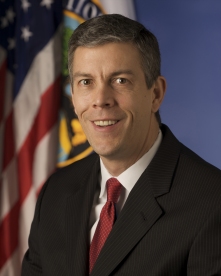House Republicans Set Budget Levels for FY11
This week the House passed House Resolution 38, which directs Budget Chairman Paul Ryan (WI) to issue budget allocations for FY 11 non-security discretionary spending at FY 08 levels or lower. The House approved the resolution by a vote of 256-165, with all Republicans and 17 Democrats voting for it. Allocations at FY08 levels would mean a 13.6 percent cut in federal programs across the board, and would result in a $9.42 billion reduction in spending for education programs from the current funding level.
Chairman Ryan is slated to provide the House Appropriations Committee with figures the week of February 7Â that they can use to prepare a continuing resolution (CR). House Majority Leader Eric Cantor (VA) wants a vote on the CR the week of February 14 before the current CR expires in March. President Obama is also scheduled to release his FY12 budget the week of February 14.
House Holds Hearing on American Workforce
The House Education and Workforce Committee held its first hearing of the 112th Congress this week, State of the American Workforce, which focused on the current state of the U.S. workforce and strategies to encourage the private sector to hire new workers. In his testimony, Gov. Bob McDonnell (VA) spoke about his state’s goal to graduate an additional 100,000 postsecondary students, especially in high demand STEM fields. During questioning, Rep. Bobby Scott (VA) asked if “vocational education opportunities†would be part of this plan, and McDonnell stated that two-year certificates and Associate degrees will help individuals obtain well paying jobs.
Administration and Senate Vow to Work Together on ESEA This Year
On a call with media this week Secretary of Education Arne Duncan, along with the Senate Health, Education, Labor, and Pensions Committee’s chairman Sen. Tom Harkin (IA), ranking member Sen. Mike Enzi (WY), and Sen. Lamar Alexander (TN), the ranking member of the subcommittee overseeing K-12 policy, said that they intend to move quickly and in a bipartisan manner on a bill to reauthorize the Elementary and Secondary Education Act. Some areas of agreement included: changing the AYP system, focusing on the lowest performing schools, advancing teacher evaluation systems, and disaggregating data by subgroups.
Harkin stated that he would like to have a bill ready for mark up by the Easter recess, and on the floor by the summer. He said the committee is going begin writing the legislation, without further hearings (the committee held 10 hearings last year).
Fast Track to College Act
This week Herb Kohl (WI) introduced S. 154, Fast Track to College Act, which would authorize the Secretary of Education to make grants to support early college high schools and other dual enrollment programs in an effort to reduce high school dropout rates and improve access to college for students.



 At a luncheon today at the National Press Club, during which he
At a luncheon today at the National Press Club, during which he 